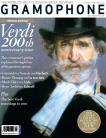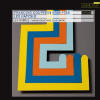Texte paru dans: / Appeared in:
*

GRAMOPHONE (02/2013)
Pour s'abonner /
Subscription information
Ambronay
AMY035

3760135100354 (ID274)
Reviewer: David Vickers
Swiss ensemble in Couperîn’s international celebration
Couperin’s four inventive trio sonatas and suites entitled Les nations (published Paris, 1726) were composed over a period of about 35 years. They allege to explore the different musical styles of France (‘La françoise’) and Italy (‘La piémontoise’), although it is futile to look for meaningful musical nationalities in ‘L’espagnole’ and ‘L’impériale’. In fact, each nation’s sonata is suspiciously Corellian and followed by a liberal sprinkling of French dances.
Ambronay festival favourites Les Ombres are described as being part of the new young generation, who apparently ‘cross borders to share a vision of human resolve beyond national divide’ and create ‘a space for creativity and expression, a human and musical adventure’. Quite so, I’m sure. The impassioned young bucks actually show kinship with older experienced heads (the Kuijken brothers, Musica Antiqua Kö1n and others) who were inclined to interpret Couperin’s straightforward scoring of two unspecified treble parts and simple basso continuo as an opportunity to mix woodwind and string instruments. Listeners wanting to hear a leaner version featuring just two violins and continuo without deviation or extra trimmings can try the Purcell Quartet, whereas Les Ombres splash colour around to an unprecedented extent by adding flutes, oboes, bassoon and theorbo (and guitar) to create ever-shifting, multicoloured performances that allegedly recreate the larger forces reportedly used by Couperin for chamber music at the court of Louis XIV.
The texture when everyone plays together in the exquisite
chaconne of ‘L’impériale’ is lushly sensuous but elsewhere quick transitions
between different instrumentations for each short movement can sound
unsettlingly self-conscious and prevent moods being developed. Such diversity is
not necessarily healthy but individual movements are always played with
admirable finesse and notes inégales are always exquisitely judged: the
two violins in the Allemande of ‘La françoise’ convey a courtly dance and the
courantes feature adroit playing from pairs of oboes and flutes. The flutes are
beguiling in the sarabande of ‘La piémontoise’ and the ‘L’impériale’ sonata is
played beautifully by two fiddles, viola da gamba and harpsichord; its unbroken
mood is much to the benefit of Couperin’s masterly contrapuntal writing.
Fermer la fenêtre/Close window
Cliquez l'un ou l'autre
bouton pour découvrir bien d'autres critiques de CD
Click either button for many other reviews


